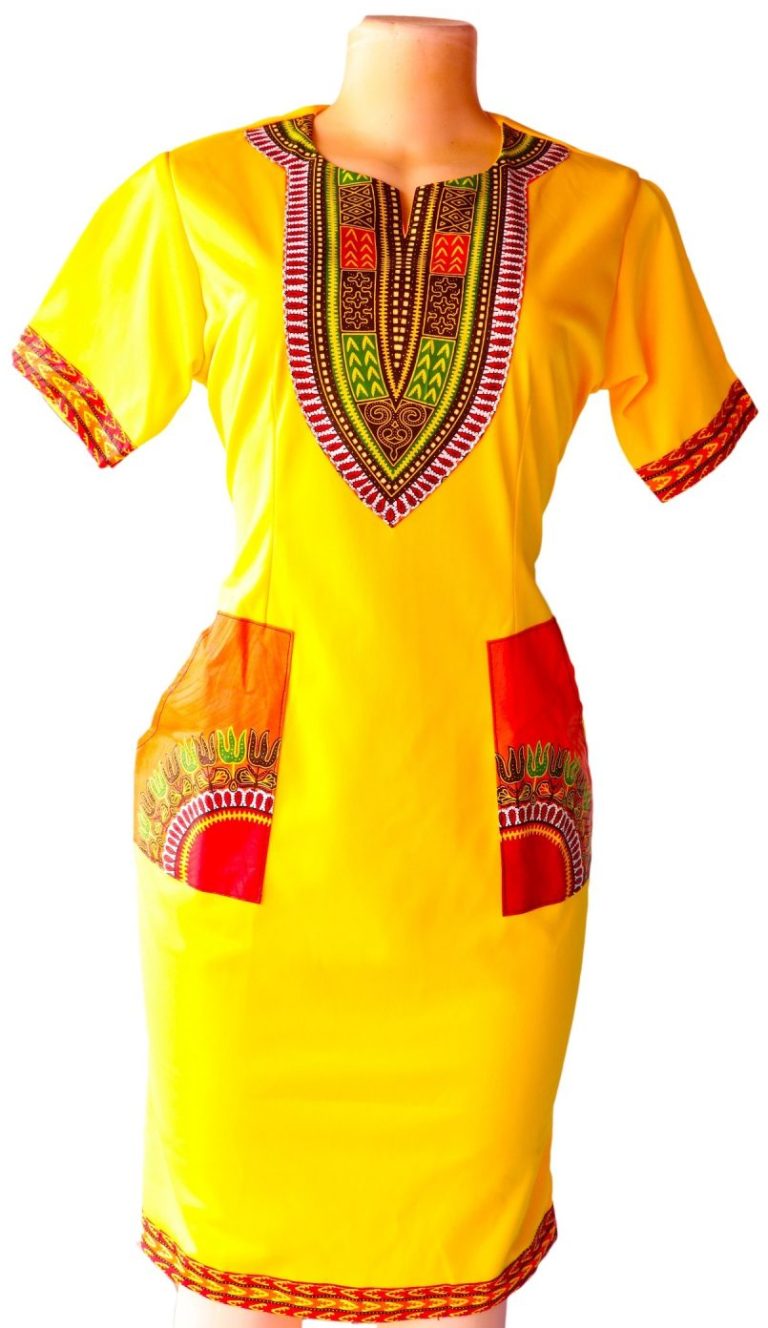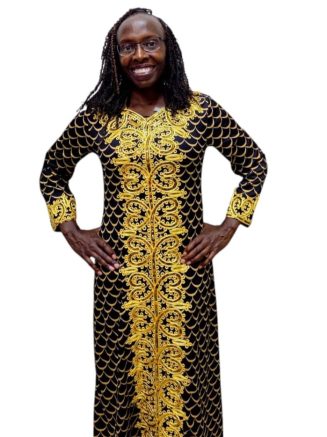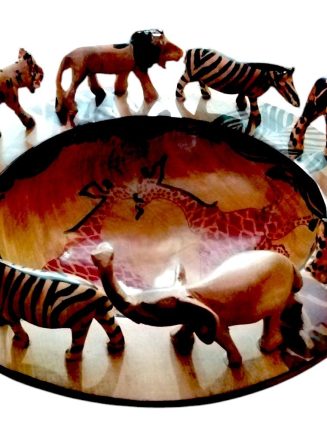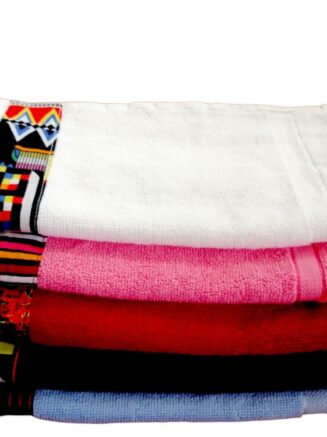Kitenge outfits are very durable and fashionable. However, how you treat your clothes after purchase will influence the extent of their overall durability. Indeed, an outfit that is estimated to serve you for five years may serve you for ten if you maintain its proper care. Are you a recent buyer of our kitenge-inspired outfits? Are you unsure of how to wash, iron, or maintain your outfits? At African Bravo Creative, we understand the questions our customers might have when they consider purchasing African-inspired outfits. We also understand the delicate needs of these outfits when it comes to washing, drying, and ironing. Below are the various methods we have that will help you clean your outfits and promote their durability.
Washing
Use Cold or Lukewarm Water When Washing
Hot water will often fade the color of your clothes regardless of whether the clothing sheds color or not. Considering the fact that African-inspired garments often have a pop of bright colors, it is clear that using hot water when cleaning might severely age your outfit. If your cloth shades color, using hot water will also make it shed more color, causing it to seem older and less elegant. Always wash and rinse your African-inspired outfits using either cold or lukewarm water, whether you are using hand or machine washing. We recommend using specifically cold water as it is ultimately more economical and serves the purpose of cleaning your clothes.
Wash With Similar Colors
Although some African fabrics do not shed color, it is common for new fabrics to shed some color, especially during the first wash. The shed color might stain other clothes that you may be washing with your African cloth, thus spoiling the other fabrics. For this reason, if you are unsure about whether your African fabric sheds color, we recommend that you wash it with similar colors. Alternatively, you may apply your cleaning agent on a small section of your fabric and dab the area with a clean white cloth. If the cloth becomes stained, it is safe to assume that the fabric sheds color. To be completely secure, you may wash your new kitenge fabric clothes alone so that you do not compromise the integrity of your other outfits.
Use the Right Amount of Mild Washing Powder
When washing your African fabric inspired clothes, always consider the fact that African fabric is very sensitive and can be easily destroyed using harsh detergents. This is because harsh detergents will often discolor some patches in your outfit, leaving light spots that might ruin the clothing. Also, do not use too much detergent as that will have the same effect on your outfit. It also makes your outfit dirtier as too much detergent creates excess suds that will collect in hidden areas of your outfit, like the collar. When washing African fabric clothes, always use a tablespoon of laundry detergent per each of your regular load sizes.
Use a Gentle Machine Setting to wash African Inspired Outfits
African fabrics are often very delicate and should always be washed using gentle machine settings like the hand wash. Always remember that the essence of an African fabric inspired clothing lies in the colors and designs of the fabric. Thus, if the colors and designs fade or discolor, the clothing loses its touch and becomes less classy. For this reason, the more delicate, the better. We recommend hand washing your African fabric inspired outfits. However, when this is not possible, always use soft washing machine setting.
Skip the Spin Cycle on Your Washing Machine
The no-spin option in your washing machine is used for highly delicate clothes that cannot tolerate a spin cycle. Always pick this option when washing African fabric inspired outfits, as this will drain the washer without spinning. This will protect your clothes from harsh movement in the washer, which might influence the clothes to start losing color. Alternatively, you may rinse hold and drain your clothes by hand before you hang them out to dry.
Turn the Clothing Inside Out When Doing a Machine Wash
If you want to further limit the shed of color on your African inspired outfit, always turn your clothes inside out before doing a machine wash. This is especially important if your clothing is not stained and thus does not need to be thoroughly washed. Turning your clothes inside out will ensure that all the dust and sweat that might have accumulated will have been entirely removed. It also reduces the bulk of having to turn your clothes inside out when hanging them out to dry. This task can be quite tedious when the clothes are wet but is easy to accomplish with dry clothes.
Use Baking Soda Instead of Bleach on Stains
Bleach is a harsh stain remover that will most probably remove the color on your African-inspired fabric. This will result in your outfit having discolored spots, thus spoiling it and making it unsuitable for wear. As such, you should always avoid using bleach when removing stains on African-inspired fabric clothes. Instead, use mild stain removers like baking soda and vinegar, as these two will reliably remove the stain while maintaining the original color of the fabric at the stained section. Mild stain removers are also gentle and will not irritate your skin.
Drying
Do Not Tumble Dry African Inspired Outfits
African fabric inspired outfits should always be hanged outside to dry. Tumble drying is not an option as this may fade the outfit or cause it to shrink. African fabrics are often made using wax print to ensure that the colors and designs of the fabric are vibrant and long-lasting. However, tumble drying uses heat, which might cause this wax to distort, thus ruining the designs. Also, heat is a general no when it comes to African-inspired outfits. Therefore, you should avoid it at all costs. In this instance, turning your clothes inside out will not help.
Line dry away from direct sunlight
When it comes to African-inspired fabric, the sun is not your friend. Just like when washing your clothes, drying your clothes using excess heat will cause them to fade and seem old. To properly dry your clothes, always place them in a shaded section of your hanging lines, whether they are exposed to the wind rather than direct sunlight. Indeed, windy weather is as effective when it comes to drying your clothes quickly and effectively. Invest in a sun-roofed section of your hanging line to ensure that you can accommodate all the needs of the different outfits in your wardrobe.
Turn Your Clothes Inside Out When Drying.
If you are unable to find a sun-roofed section in your hanging line, always turn your clothes inside out before placing them on the hanging line. As such, the sun will only fade out the inside of your outfit, ensuring that you maintain the colors and elegant feel of your kitenge fabric. Turning your clothes inside out should be maintained in all your outfits; not necessarily the African fabrics will ensure that your clothes retain their original color and last longer.
Iron
Iron
African Inspired Outfits
Using the Cotton Setting
African-inspired fabrics are often made using cotton. Also, the outfits we sell at our website primarily use cotton to ensure the comfort of all our customers, as cotton is breathable and durable. As such, when ironing most of the clothes on our website, you should use the cotton setting. However, to be safe, you should always use the tag on or clothes to confirm the fabric used. Also, some of our outfits might contain an ensemble of different fabrics, such as linen. In this instance, we recommend that you use different machine settings for different sections of the clothing. This will ensure that you do not burn your outfit.
Iron on the Inside
If you are unsure of the settings in your iron, always iron your clothes on the inside. This will ensure that you will spoil the linen of your outfit rather than its outside fabric in case of a burn. Ironing on the inside is also preferable if your iron is spoilt and often overheats. Alternatively, if you have a dirty iron that will most likely give your clothes a permanent stain, always iron on the inside. However, a more reliable option is to wash your iron with salt and steel wool or replace it as soon as possible.
In conclusion, please consider hand washing your African fabric inspired outfits rather than using a washing machine. Although washing machines are generally more efficient when saving time and energy, they can be rather confusing. The different needs that African fabrics need when machine washing makes the task more tedious. This will make it harder to remember some valuable aspects, such as not spinning your clothes. If you are in doubt, always opt to hand wash your outfit. However, this should not make you shy away from purchasing African inspired clothes. Visit our shop section of this website and see the different outfits that might be a perfect fit for your style.












